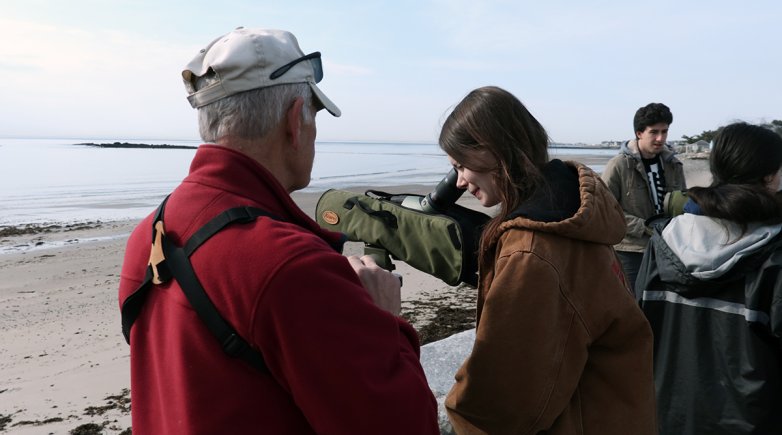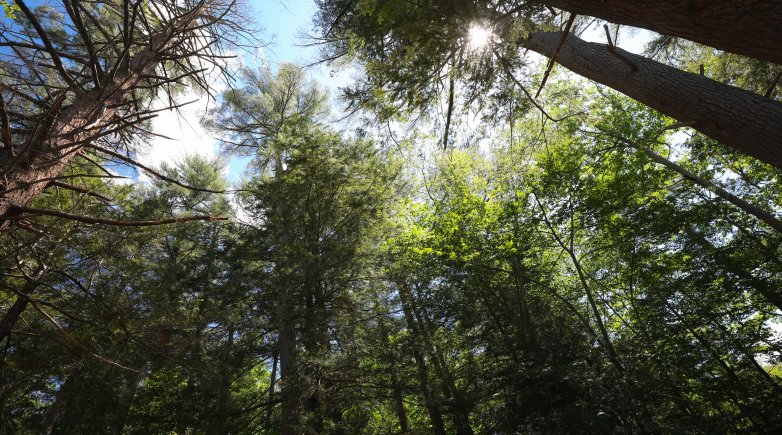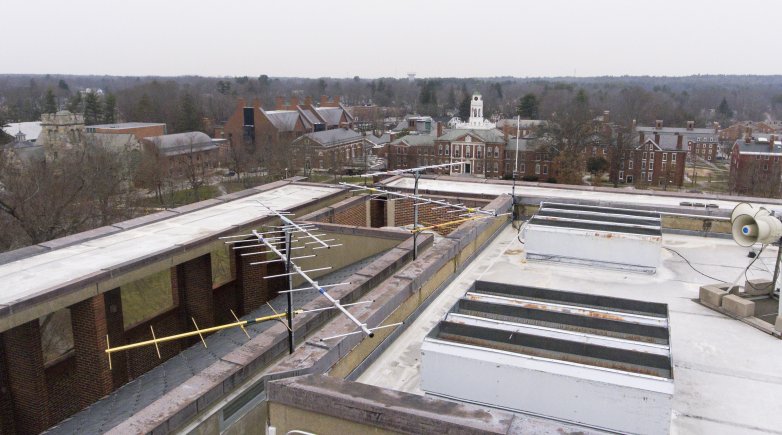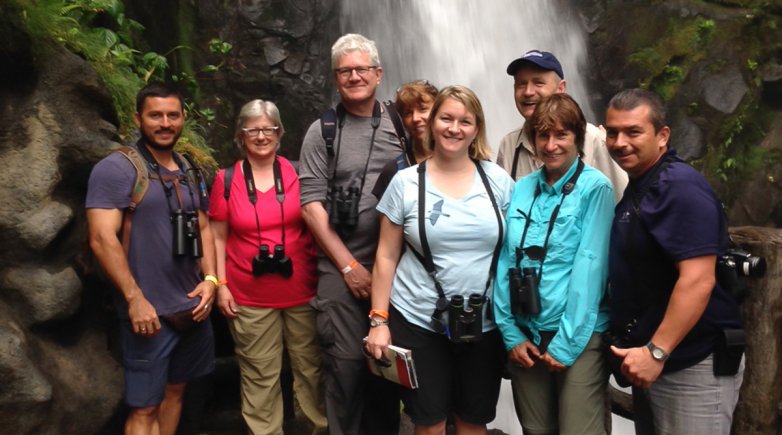Bird is the word
Ornithology students spread their wings to put identification skills to the test.
Former Instructor in Science Rich Aaronian helps Veruka Salomone ’23 spot waterfowl.
If the early bird gets the worm, then the early student gets the bird. That’s the thinking as a small flock of Exonians board a bus as the sun begins to rise over campus.
The outing is one of many the group will take as part of BIO460: Ornithology, a course that emphasizes field identification of locally common species and habitats.
The morning’s itinerary includes multiple stops, starting with the town of Exeter's water treatment center, adjacent to the Squamscott River, followed by a short, 10-mile ride to the Atlantic Ocean and surrounding marshes.
Seated in a line across a rock wall at North Hampton Beach State Park, the group of uppers and seniors scan the skies, binoculars pressed to their eyes. “How many new species have we seen today, seven, eight?” asks Instructor in Science Chris Matlack. “Ten!,” one student answers back. Matlack and his class are taking advantage of the migratory season, when the coastline becomes a highway for winged traffic. “We’re at the beginning of the spring migration, so we’ve had a whole bunch of duck species.”




